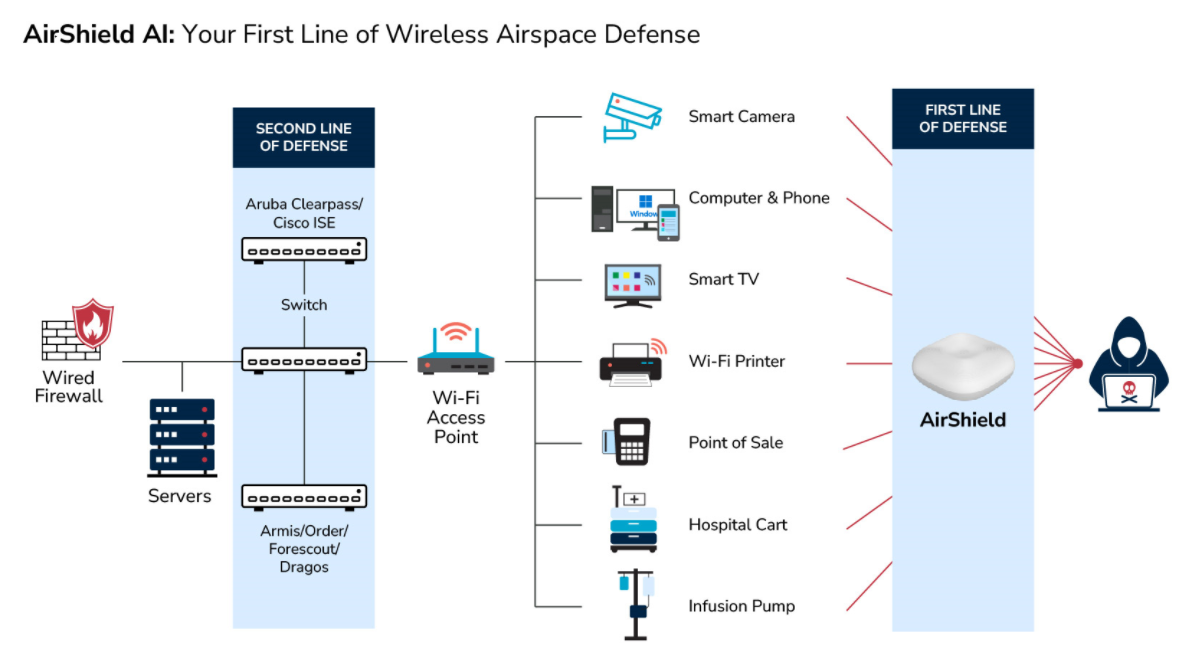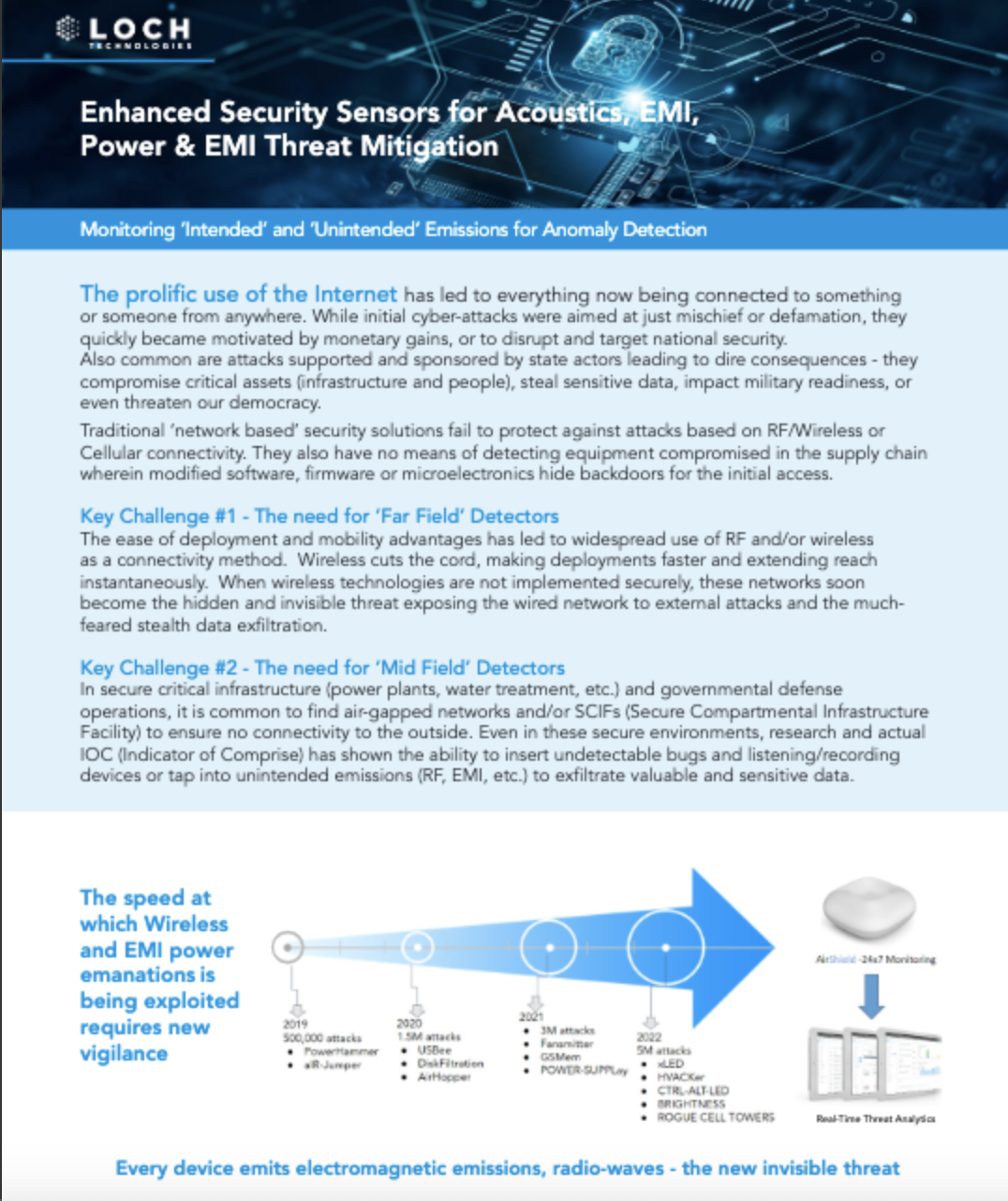Electromagnetic Interference (EMI)
Attack Surface
What is Electromagnetic Interference (EMI)?
EMI refers to interference caused by electromagnetic waves emitted by electronic devices. It can lead to various issues, including signal distortion, data loss, equipment malfunction, and disruptions in critical systems, making it a critical vulnerability in the realm of wireless airspace defense.
Garry Drummond, CEO and Founder of LOCH, explains EMI and its implications

Join Us at the Security & Policing Home Office Event – Farnborough, UK, March 11th - 13th, 2025
Read More
Creating the Next Frontier in Wireless Technology: The Critical Need for Wireless Airspace Defense
Read More
The Silent Threat of Rogue Wi-Fi Networks on Navy Ships – How LOCH's AirShield Could Have Prevented a Security Breach
Read MoreEMI Risks and Threats
The proliferation of wireless devices, ranging from WiFi and Bluetooth to 4G/5G and IoT technologies, has expanded the scope of EMI challenges. With hundreds of new protocols, frequencies, and operating systems now being used (outside of the WiFi frequencies) to transmit data, over-the-air attacks are becoming increasingly more frequent and sophisticated. Without broader RF visibility, the attacks go undetected, posing risks to both operational integrity and data security.
How do we protect against EMI vulnerabilities and exposure states?
Continuous monitoring of the network's foundational layers and EMI emissions measurements is crucial to identify compromised or counterfeit hardware that can serve as EMI vulnerabilities. Implementing an EMI Intrusion Detection System and scanning all wireless communication frequencies further safeguard against security threats and malicious activities by providing early detection capabilities.
LOCH solves EMI issues through
Continuous Monitoring
EMI Emissions Measurements
Measure EMI emissions (power fingerprints) of new equipment against a gold standard to detect tampered hardware or counterfeit products.
EMI IDS (Intrusion Detection System)
Introduce an early warning system to identify unusual layer 0 activities and layer 1 attacks.
Scanning All Wireless Communications
Detect nefarious wireless activities across all wireless communication types, including cellular, CBRS, Bluetooth, Industrial Wi-Fi, and IoT frequencies.










